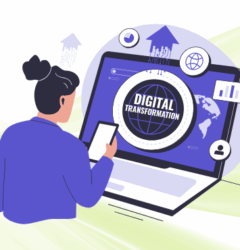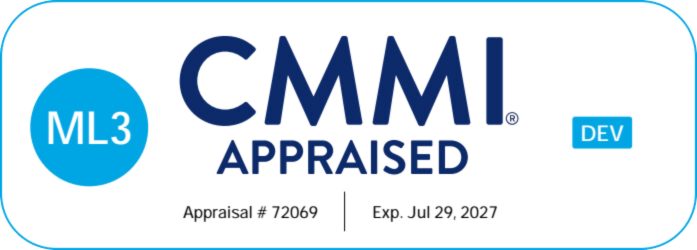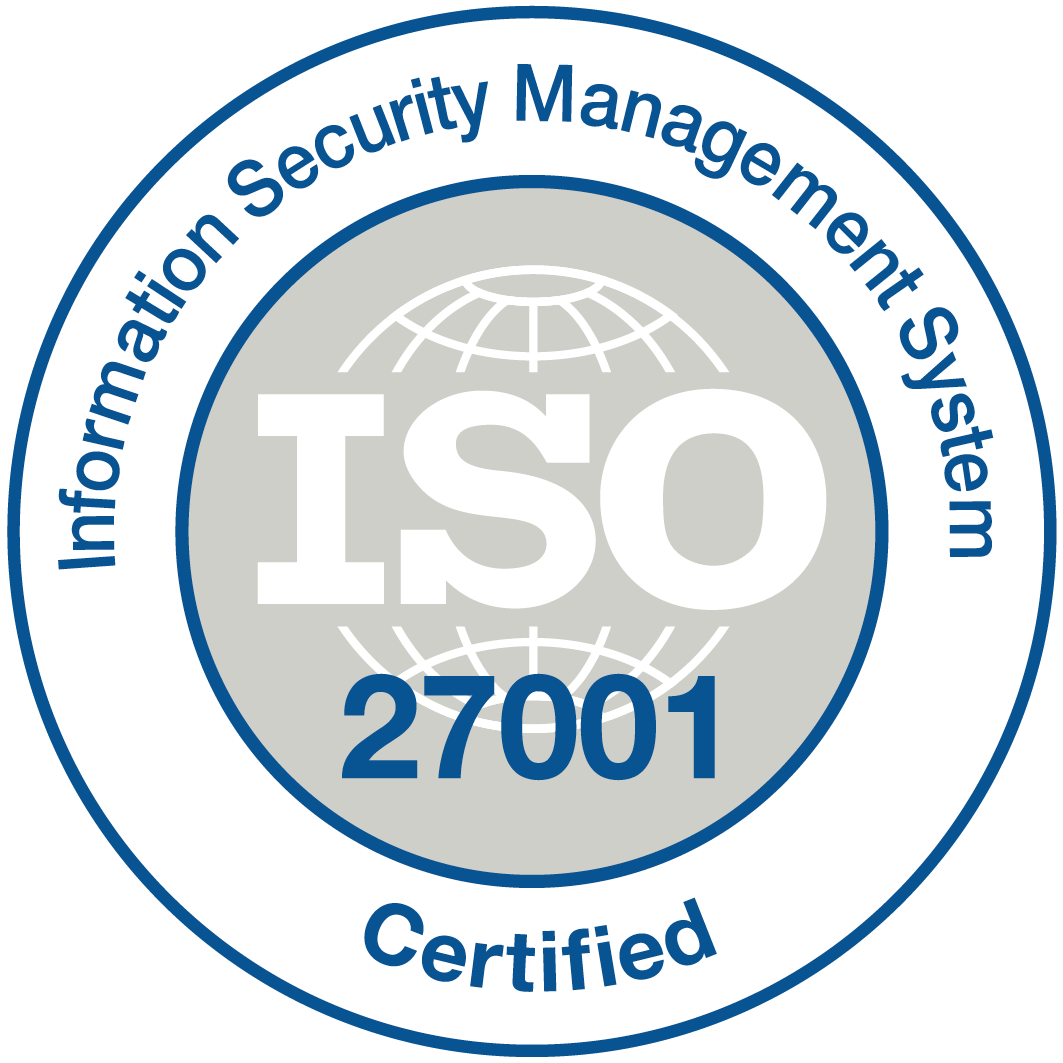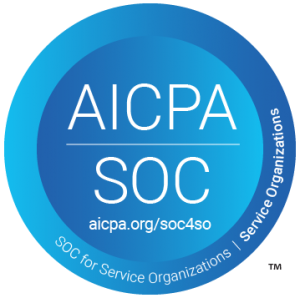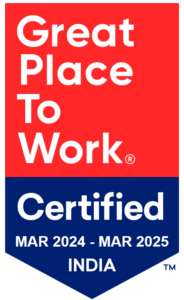
Get used to the rapids rather than chasing waterfalls. For continuous iteration and faster software delivery, explore rapid application development.
Around the world, rapid application development has become one of the most widely adopted development processes. In addition to ensuring fast and smooth application development, this application development process allows the developers to meet their goals more efficiently. The forecast indicates that the rapid application development market is projected to grow at a Compound Annual Growth Rate (CAGR) of 42.6% between 2021 and 2026. What’s the reason for its popularity? Or, what does rapid application development mean? All of these topics will be discussed in detail in this blog.
What is Rapid Application Development?
Rapid application development definition: It emphasizes rapid prototyping over long development and testing cycles. It is possible to make multiple updates to the software without starting over every time with rapid application development. As a result, the result is more quality-focused and aligned with the needs of the end users.
The Waterfall model dominated software development in the 1970s and 1980s. Projects are broken down into sequential maps of several steps, where each step depends on the completion of the previous one.
Waterfall models have the disadvantage of not being able to revisit the core features and functions once the product has entered the testing phase. As a result, teams end up with software that may or may not meet the evolving needs of end users.
The concept of Rapid Application Development (RAD) was conceived in the 1980s, so it isn’t a revolutionary concept. However, it is not singular like the waterfall model. This is a continuous evolution of development philosophies according to the requirements at the time.
During the 1980s, Barry Boehm, James Martin, and others realized that software was not a raw mineral resource. They recognized the infinite malleability of software. In designing their respective development models, Boehm and Martin took advantage of the software’s inherent pliability. Eventually, rapid app development evolved into agile development and other forms.
History and Evolution of Rapid Application Development
Before becoming a popular approach in today’s fast-paced development world, Rapid Application Development (RAD) was introduced in the 1980s by James Martin as an alternative to the rigid waterfall model. Initially developed to reduce development time and promote user feedback, RAD has evolved into a flexible, iterative methodology that aligns perfectly with modern needs like continuous delivery, user-centric design, and fast go-to-market strategies. Today, it serves as a cornerstone for no-code and low-code platforms, enabling rapid innovation without sacrificing quality.
The forecast period (2022 – 2027) anticipates a CAGR of 42.8% for the Global Rapid Application Development Market.
Also Read: Digital Transformation Demystified !!
Key Principles of Rapid Application Development
Expanded Content:
RAD is built on a few core principles that differentiate it from traditional development models:
- User Involvement: Continuous feedback and collaboration with end-users.
- Prototyping: Fast creation of functional models for validation.
- Iterative Development: Improvements are made in quick cycles based on feedback.
- Timeboxing: Development is divided into fixed periods to maintain pace.
- Flexibility: Easy to adapt based on changing requirements.
Understanding these principles sets the stage for the steps that follow in the RAD methodology
4 Steps in Rapid Application Development Methodology
RAD methodology involves four phases of application development while achieving a quick turnaround time (TAT).

1. Determining Requirements
During the first phase, all participants (managers, IT employees, users, etc.) determine the project’s needs, scope, challenges, and requirements. It sets broad requirements for staying flexible over time, which differentiates RAD model from other models.
You can break down the planning phase into the following steps:
- Researching and identifying the current problem
- Identifying the project’s requirements
- Finalizing requirements specifications and sharing them with stakeholders
- Obtaining approval from stakeholders
This stage allows teams to avoid confusion, minimize costly changes, and understand stakeholders’ needs transparently.
Due to RAD’s principle, requirements can change during development, so the planning phase is kept short. The goal is to gain a concise understanding of the project.
Also Read: Top 10 Blockchain Application Development Companies to Transform You Business
2. The Design Phase
Developers and users work together to develop a prototype covering the outlined requirements. It is a continuous process in which users provide feedback on the prototype until the final product is approved. In such prototypes, the main system requirements are covered by the main features of the system. The success of the final product depends on this phase.
The developers deliver customized prototypes that facilitate testing at each stage.
By allowing clients to test prototypes, developers can fix bugs as they are implemented. In addition, clients can decide what functions to keep and what to discard at the beginning of the development process. This phase ensures no potential errors or unwanted functions through collaboration, continuous interaction, and regular testing.
3. Constructing Rapidly
Input from the user forms the basis of this other continuous phase. The goal of this step is to implement the feedback provided by the users through coding, testing, and other development tasks. Until the product is approved by the users, the 2nd and 3rd phases feed into each other.
Developers, programmers, and testers build workable applications in less time because many issues, tweaks, and changes are addressed in the design phase. To accommodate any alterations and ideas, you must stay in contact with the client throughout this process.
A quick breakdown of the rapid construction phase can be done as follows:
- Making preparations
- Development of applications
- The coding process
- Testing and integration of units
Clients may discover some concepts in the design phases that don’t function as expected during the rapid construction phase. To resolve such problems, you can return to prototyping. Upon receiving positive user feedback, move on to the next step.
4. Implementation Phase
Upon approval, developers add some finishing touches such as testing, conversion, interface, and user training. A product is ready for delivery once it has been properly assessed for factors like stability and longevity.
Team members optimize applications in a live production environment to ensure stability and maintainability. Before handing over the final product to the client, the implementation phase includes documenting, completing maintenance tasks, and providing user training.
Team Roles in a RAD Environment
A successful RAD project depends not only on the process but also on the people involved. Common roles in a RAD team include:
- Business Analysts – bridge between users and developers.
- Developers/Builders – rapidly construct prototypes and final solutions.
- End-Users – provide ongoing feedback and validation.
- Project Managers – keep timelines, budgets, and priorities in check. No-code/low-code tools like Quixy also enable non-technical staff (citizen developers) to take part in building and iterating applications.
Why should you use Rapid Application Development?
Rapid application development helps the organization deliver applications quickly. RAD reduces the time-to-market and provides businesses with a competitive edge as any changes can be quickly incorporated into the business. Collaboration and user involvement are key in RAD; it ensures that the software meets user needs and expectations. By involving stakeholders and users throughout the development process, RAD enhances customer satisfaction. Additionally, RAD promotes cost-effectiveness by identifying issues and requirements early on, increasing productivity by leveraging existing components, and improving software quality through continuous testing and refinement. While RAD may not be suitable for all projects, its emphasis on speed, flexibility, collaboration, and user-centric development makes it a valuable approach for many organizations.
Benefits of Rapid Application Development(RAD)
Rapid Application Development (RAD) is a flexible, iterative, and user-driven approach to software development that accelerates the process while ensuring high adaptability. Here’s how RAD benefits businesses:
🚀 Faster Development Cycles
RAD reduces time-to-market by using pre-built components, drag-and-drop functionality, and iterative prototyping, cutting development time by up to 50%.
🔄 Enhanced Flexibility & Adaptability
Changes can be made at any stage without disrupting the entire project, allowing for quick adjustments based on evolving business needs.
👥 Continuous User Feedback
Frequent iterations and testing involve end-users throughout the process, ensuring the final product meets real-world requirements and enhances user satisfaction.
💰 Lower Development Costs
By reducing extensive planning phases and enabling rapid iterations, RAD minimizes costly rework and optimizes resource usage.
🤝 Improved Collaboration
Encourages seamless communication between developers, stakeholders, and end-users, fostering a collaborative and transparent development process.
✅ Higher Quality Outcomes
Continuous testing and validation throughout development lead to more reliable, user-centric applications with fewer post-launch issues.
RAD empowers businesses to innovate faster, reduce risks, and maximize efficiency, making it an ideal approach for modern digital transformation.
Rapid Application Development Cycle
The four stages of RAD are heavily influenced by the systems development lifecycle (or SDLC, for short), and could even be viewed as a condensed version of SDLC. Let’s have a look at the general outline of the stages:
Planning
This is the first stage of the Rapid Application Development lifecycle, where you evaluate the scope and goals of the project, features, solutions, functionalities, as well as the associated roadmap.
Analyzing
This stage is concerned with identifying what needs to be developed based on the current situation and project goals.
Designing
During the design stage of rapid application development, an outline or flow diagram is created. This describes the general design of the product, screen layout, workflow, program rules, methods, and so on.
Implementation
The implementation and environment cycle is concerned with the progression of the product through various stages of development until it is ready for end-user use.
Testing
As part of the Rapid Application Development process, the product is examined on different levels to identify any bugs and resolve them.
Evaluation/Maintenance
After training and transitory periods, the software is maintained and regularly evaluated to assess any shortcomings or potential improvements.
Rapid application development Vs. Agile Development
In software development, rapid application development and Agile are both terms used to describe iterative processes. The goal of either approach is to solve the problems associated with traditional development methods, such as the Waterfall approach. Even though the two terms are often used interchangeably, there are some subtle differences between them.
Agile development is a set of practices and methods based on iterative development, where solutions and requirements are refined by collaborating between teams. Among its practices are stand-ups, test-driven development, pair programming, and sprints, as well as frameworks like Scrum and Extreme Programming.
In Agile development, specific features of a project are delivered in sprints over the development cycle. Contrary to rapid application development, rapid application development focuses on iterative prototyping that is improved through feedback.
Furthermore, rapid application development emphasizes functionality over user interfaces and user experiences. While agile focuses on the design of a project, it considers it a vital part of it.
Also Read: A Comprehensive Glossary of Digital Transformation Terms
How does RAD differ from traditional waterfall development?
- RAD emphasizes iterative development and prototyping, whereas waterfall follows a linear sequential approach.
- RAD involves stakeholders and end-users throughout the process, while waterfall relies on predefined requirements.
- RAD prioritizes speed and adaptability, while waterfall focuses on detailed planning and documentation.
- RAD enables faster delivery of functional software, whereas waterfall can take longer due to its sequential nature.
Also Read : Rapid App Development with Quixy Experience the Revolutionary Power
When should you use the Rapid Application Development model?
There are many factors to consider when choosing an application development approach. If you receive a positive response when you ask these questions, you should consider the RAD model:
- Do you have a client who is open to RAD and willing to collaborate with your team throughout the project?
- Are you able to navigate the rapid application development process while ensuring strong communication with your development team?
- Does everyone on the project team agree with the project’s schedule and timeline?
- Can you navigate the rapid application development process with the right tools and software? Are you able to procure them if not?
- Are there any technical risks?
- Is there a deadline for delivering your project?
Choosing the rapid application development approach is possible if you answer all questions positively. However, there are some things you should keep in mind.
As an example, development teams can work at different speeds when working together. Rapid application development might take longer than expected because system integration can happen when both teams complete their work.
A difference in logic and programming styles can further complicate system integration.
Before proceeding with rapid application development, these parameters need to be carefully planned and adjusted.
Checklist: Is RAD Right for Your Project?
Use this checklist to see if RAD fits your next project:
- ✅ Do you need to launch quickly?
- ✅ Are your requirements flexible or evolving?
- ✅ Will end-users be available for regular feedback?
- ✅ Is prototyping an effective validation method for your use case?
- ✅ Does your team have access to LCNC tools? If you answered “yes” to most, RAD might be your ideal approach.

Challenges of Implementing RAD in Enterprises
While RAD offers many benefits, enterprises may face the following challenges
- Resistance to Change: Teams used to traditional models may resist shifting to RAD.
- Budget Constraints: Constant prototyping may appear expensive without a strategic plan.
- Scalability Concerns: Prototypes may be quick but not always scalable unless properly designed.
- Legacy Systems: Integration with outdated infrastructure can slow progress.
Fortunately, modern LCNC platforms like Quixy help address these challenges through modular architecture, enterprise-grade governance, and seamless integrations.
Rapid Application Development Tools
Rapid application development emphasizes rapid prototyping and the development of workable solutions rather than hardline planning. With no-code development platforms, you can reduce the amount of code you have to write, create prototypes more quickly, and reduce the amount of time you have to dedicate to the development process & digital advancement efforts.
No-code development platforms as rapid application development software
A no-code development platform allows businesses to develop software quickly and easily without coding. It is possible to build and design business applications using a WYSIWYG editor or by dragging and dropping components.
Rapid application development can be practiced by developers as well as non-developers who can customize workflows and functionality. There is a significant difference between these tools and low-code development platforms in terms of the level of customization that can be achieved.
Compared to low-code development platforms, no-code platforms provide relatively less customization and functionality. Instead of having to access or modify the source code, no-code development provides more tools for organizing information.
How AI Enhances Rapid Application Development
AI takes RAD to the next level by:
- 🤖 Auto-generating Prototypes – Tools like Quixy’s Caddie AI reduce manual effort in app creation.
- 📊 Intelligent Suggestions – AI-driven insights help prioritize tasks and features.
- 🧠 Natural Language Processing (NLP) – Allows users to create forms or workflows just by describing them.
- 🔍 Smart Testing – AI can assist in automating test cases and spotting anomalies early. Integrating AI ensures smarter, faster, and more accurate development cycles—especially in LCNC environments.
Rapid Application Development Example
Developing software quickly is particularly useful for businesses that require software quickly but wish to have much input in the development process.
For example, Suco Bank, one of the leading banks, used plenty of software for its non-financial activities like HR, Appraisal, Inventory management, etc. Suco was looking for a one-stop solution for all its non-core financial activities. Quixy, one of the leading no-code rapid application development platforms, was used to create an application for SUCO Bank.
All the requirements were discussed, and the first SOP was built within two weeks. The rapid app development helped SUCO to find solutions that would have taken months if it had been done with the traditional app development method. Read more about it here.
Disadvantages of Rapid Application Development and How No-Code Can Help
While rapid application development (RAD) offers many benefits, it also comes with certain disadvantages. Fortunately, no-code platforms like Quixy can help you conquer these challenges. Here’s how:
1. Potential for Poor Quality
Challenge: The focus on speed in RAD can sometimes lead to inadequate testing, resulting in bugs and errors.
Solution: No-code platforms streamline the development process by providing pre-tested, reusable components. This ensures that applications are built with high-quality standards from the outset, reducing the likelihood of bugs and errors.
2. Limited Scalability
Challenge: Applications developed quickly may not be as scalable, potentially leading to performance issues as demand grows.
Solution: No-code platforms offer scalable solutions that allow you to easily expand your application’s capabilities. With built-in scalability, your applications can grow alongside your business without major overhauls.
3. Scope Creep
Challenge: The flexibility of RAD can lead to scope creep, with new features and requirements being continuously added, causing delays and complexity.
Solution: No-code platforms facilitate better scope management through visual development and real-time collaboration. This enables clearer project boundaries and easier adjustments, ensuring that projects stay on track.
4. Inconsistent Documentation
Challenge: The emphasis on speed in RAD often results in poor documentation, making future maintenance difficult.
Solution: No-code platforms automatically generate documentation as you build, ensuring that every aspect of the application is well-documented. This makes future updates and maintenance more straightforward and less error-prone. Also, Quixy’s sandbox feature allows you to test changes and new features in a controlled environment before deployment and can go back to the old version if needed. This helps maintain comprehensive documentation and ensures that updates and maintenance are more straightforward and less error-prone.
5. Integration Challenges
Challenge: Rapidly developed applications might not integrate well with existing systems, leading to additional time and resource investments.
Solution: No-code platforms come with robust integration capabilities, allowing seamless connectivity with existing systems and applications. This ensures that new applications can be easily incorporated into your existing IT ecosystem.
By leveraging a no-code platform like Quixy, you can overcome the common disadvantages of rapid application development. No-code empowers you to maintain high quality, scalability, clear documentation, and seamless integration, all while keeping your projects on schedule and within scope.
Quixy: Where Rapid App Development Meets Agile Excellence
Did you know that companies using Agile methodologies are 28% more successful than those that don’t? Or that Rapid Application Development (RAD) can cut development time by up to 50%? In today’s fast-paced digital world, speed and adaptability are no longer optional—they’re essential.
Quixy seamlessly combines RAD’s speed with Agile’s flexibility, enabling businesses to build, iterate, and deploy applications faster than ever—without writing a single line of code.
Why RAD + Agile?
Traditional software development often gets bogged down by long timelines, rigid processes, and heavy coding requirements. By blending RAD’s rapid prototyping with Agile’s iterative approach, Quixy helps businesses:
✅ Develop apps 5x faster with a visual, drag-and-drop interface.
✅ Adapt in real time with continuous feedback and iteration.
✅ Enhance collaboration by involving business users and IT teams alike.
✅ Reduce costs by cutting development efforts while maintaining high-quality output.
How Quixy Delivers the Best of Both Worlds
- Rapid Prototyping: Instantly create functional models before full-scale deployment.
- Seamless Iteration: Agile sprints ensure ongoing improvements and adaptability.
- Effortless Integration: Connect with existing systems for smooth digital transformation.
- Enterprise-Grade Security: Scale confidently with top-tier security measures.
By merging RAD’s efficiency with Agile’s adaptability, Quixy empowers businesses to innovate faster, streamline workflows, and stay ahead of the curve.
🚀 Why wait? Build, adapt, and grow with Quixy today!
Explore Quixy and see how it can transform your app development process.
Future of RAD: What’s Next?
The future of RAD is bright and tightly connected with:
- 🌐 Generative AI and Prompt Engineering
- 📱 Mobile-First Development
- 🧩 Composable Architecture
- 🧑💻 Citizen Development Enablement
- 🔐 Increased Security Controls for LCNC tools As RAD continues to evolve, platforms like Quixy will play a critical role in ensuring businesses can innovate rapidly while staying secure, scalable, and user-centric.
Conclusion
Businesses can no longer afford slow, rigid development cycles. The combination of Rapid Application Development (RAD) and Agile methodologies provides the perfect balance—enabling faster iterations, real-time adaptability, and seamless collaboration across teams.
By leveraging visual development, automation, and continuous improvement, organizations can streamline workflows, accelerate innovation, and stay ahead in an ever-evolving market. With the right approach, businesses can turn ideas into reality faster, reduce development overhead, and build solutions that truly align with their needs.
Embracing speed, flexibility, and efficiency is no longer an option—it’s a necessity for success in the modern digital era.
Frequently Asked Questions (FAQs)
Q. What is Rapid Application Development (RAD)?
RAD is an agile software development approach emphasizing quick prototyping and iterative development. It focuses on delivering functional software rapidly by involving end-users in the development process. RAD enables faster time-to-market and enhances collaboration between developers and stakeholders.
Q. What is Rapid Application Development RAD Methodology?
Rapid Application Development methodology is an adaptive approach that emphasizes customer feedback and continuous improvement. It involves incremental development cycles and leverages prototyping to refine software quickly. RAD fosters continuous communication and accommodates evolving project requirements.
Q. Why use Rapid Application Development (RAD)?
RAD is used to accelerate the development process, reduce development costs, and meet rapidly changing business needs. It enables quicker delivery of functional software, facilitates customer involvement, and allows faster responses to market demands.
Q. How ensure Rapid Application Development meets company strategic goals?
To align RAD with strategic goals, involve stakeholders from the outset to define clear objectives. Conduct thorough initial planning and continuously review progress. Ensure regular communication among cross-functional teams to maintain alignment with business goals.
Q. What are the steps involved in Rapid Application Development (RAD)?
In RAD, the key steps include:
– Requirements Gathering: Understand user needs and define project objectives.
– Prototyping: Create visual representations of the software to gather feedback.
– Iterative Development: Develop the software incrementally, refining it in each cycle.
– User Testing: Involve users to evaluate the prototypes and provide feedback.
– Feedback Integration: Integrate user feedback to improve the software’s functionality and design.
– Finalization: Complete the development, conduct thorough testing, and launch the product.
Login
Please login to comment
0 Comments
Oldest
